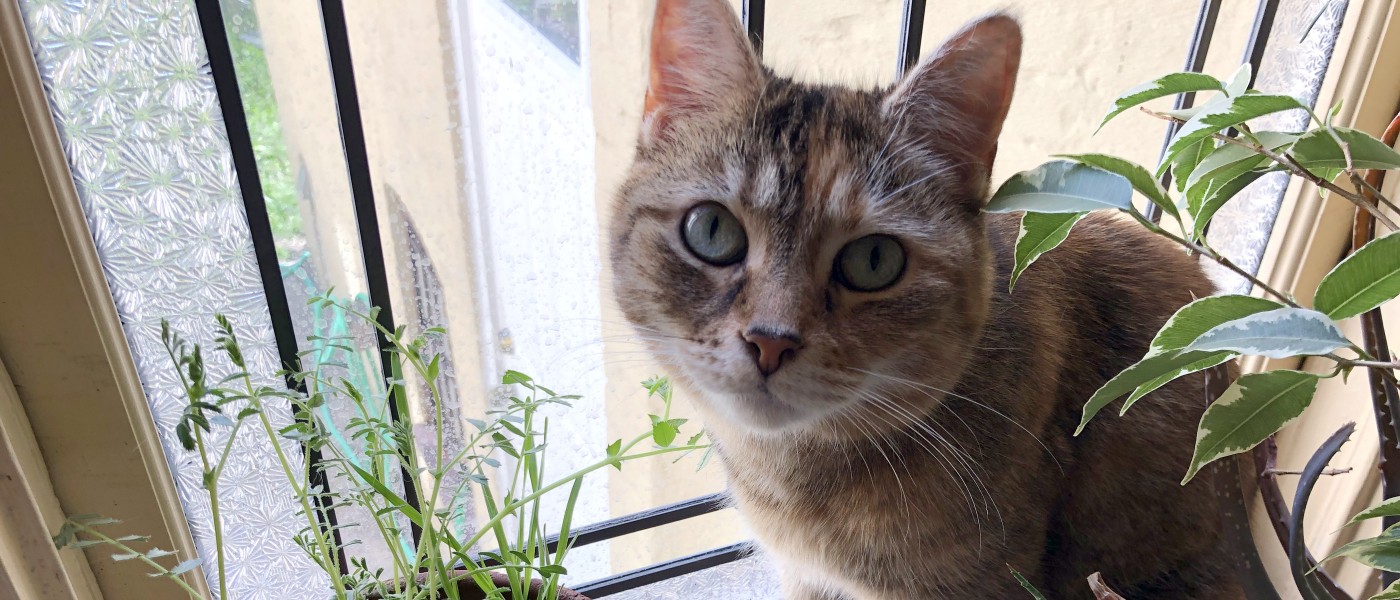Bring Nature Indoors to Your Cat
New Yorkers are spending much more time indoors with their pets these days and fostering more cats and dogs than ever from local animal shelters. While we’re all sheltering at home together, some well-chosen houseplants can help us all bond and satisfy our mutual need for a taste of the outdoors.
My cats have always been indoor cats. I don't allow them outdoors in order to keep them from chasing birds (according to the American Bird Conservancy, cats kill about 2.4 billion birds per year). But while working remotely, I set up my home office space next to my sunniest, plant-filled window, and witnessed just how often my cat nibbles my houseplants.
Many plants are toxic to pets, according to the ASPCA’s website, so I decided to plant a safe indoor garden for her to help satisfy her need for a taste of nature, while discouraging her from eating something that might make her sick. To do the same for your cat, you’ll only need a few supplies and a little bit of space.
Along with some seeds, you’ll need a container and some potting soil. I’ve planted in both a plain old flowerpot and a repurposed milk carton.
There are plenty of cat-friendly grass seed mixes and kits on the market (like this one for example). You can also raid your pantry for some of the grains they contain, like barley or oats. Be sure you’re using whole grains, not pearled, rolled, steel-cut, or split, and be sure to check the ASPCA’s list to confirm safety. Not sure your grains will sprout? Try a germination test.
If growing catmint or catnip—from seed or nursery pot—interests you, just keep this in mind: Those plants need plenty of sun to perform their best, and your cat’s enthusiasm for them may send your windowsill garden crashing to the floor!
Here’s what you need to do:
- Start with a clean container and tray. Upcycling is great, just don’t deter a finicky cat with any off smell.
- Find a sunny windowsill and make sure your new planter and tray will fit there.
- If there aren’t any, poke some holes in the bottom of your container for drainage. Now fill it with potting soil.
- Sprinkle your seeds (including any that successfully germinated in your germination test). Planting these seeds pretty tightly together is fine. Lightly cover with more soil. It’s ok if you can see some seeds through the soil.
- Water gently and keep evenly moist, but not soaking wet, until the seeds germinate. Covering lightly with some clear plastic can help germination.
- Place your seeded container on your sunny sill and wait, gently watering whenever the surface dries. How long the seeds take to germinate will vary by type and age of the seeds. Remove any plastic cover once you see green growth.
Once this batch of seedlings gets too tall or lanky, just cut them back, fold them back into the soil, and reseed again.
Of course, there’s no guarantee any cat will actually nosh what you offer. My cat’s reaction has been lukewarm so far. But the trial and error has been fun and has provided us both with a much-needed nature fix.


